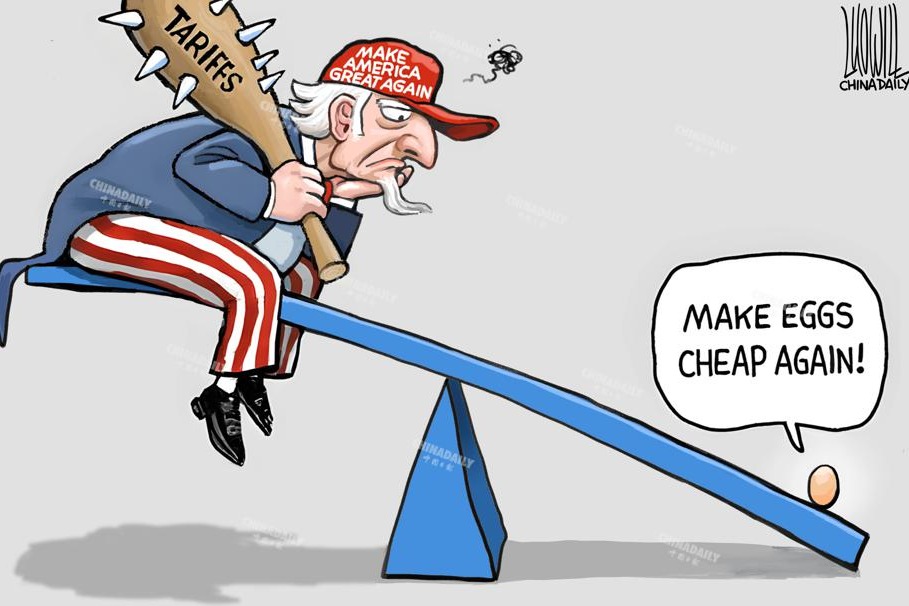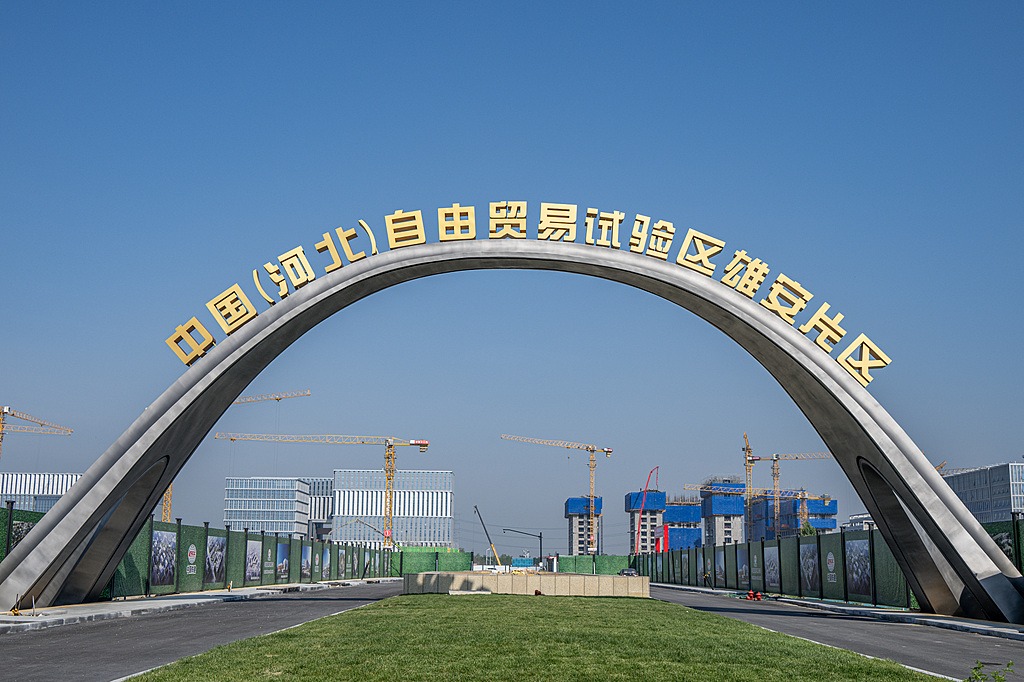Silicon curtain descending
The US is building a 'digital alliance' in the Asia-Pacific region with the aim of isolating China


The US is building a 'digital alliance' in the Asia-Pacific region with the aim of isolating China
A new technological revolution is having a growing influence on international relationships, with the digital sector emerging as a new frontier for the strategic competition among major countries, particularly between China and the United States, sparking global concerns about the emergence of a "silicon curtain" or "information curtain". In fact, as early as 2010, then US secretary of state Hillary Clinton said that "an information curtain is descending across much of the world", reflecting a "digital Cold War" mentality.
In recent years, the US has ramped up its efforts to draw up the rules of digital trade in a bid to lead the new-generation global trade rules by signing some of the most comprehensive and advanced digital trade rules in history, including the US-Mexico-Canada Trade Agreement and US-Japan Digital Trade Agreement. In this way, the US is trying to elevate the digital trade rules in its favor from plurilateral to multilateral levels to help its technology giants seize global market shares and expand its digital interests globally.
As the world's largest digital economies, the US and China's strategic competition in the digital sector will grow increasingly fierce. The US is tightening security reviews on data using "long-arm jurisdiction". As the US-China competition in the high-tech field intensifies and the risks escalate into a "technological Cold War", geopolitics will play a bigger role in the rules for cross-border data flows, and the global movement of "key sensitive data" related to "national security" will come under closer scrutiny. Despite being a self-styled champion of the free cross-border flow of data, the US actually enforces stringent rules on the outflow of data.
By compiling a list of controlled unclassified information, the US government has defined "key data" in 17 categories, including agriculture, controlled technology information, key infrastructure, emergency management, export control, finance, and geographical products information. The Foreign Investment Risk Review Modernization Act of 2018 further expanded the US jurisdiction to include not only companies involved in "key technology and infrastructure", but also "key or sensitive data". The act strictly forbids foreign companies from collecting US citizens' data.
Recently, the US Securities and Exchange Commission required some US-listed Chinese companies to hand over their audit working papers, triggering a dispute over cross-border data security. In 2018, the Donald Trump administration signed into law the CLOUD Act (Clarifying Lawful Overseas Use and Data Act), which allows the US government to compel US-based technology companies to provide data, regardless of whether the data are stored in the US or abroad.
The act, which disregards traditional bilateral or multilateral judicial assistance treaties, allows the US government to unilaterally exercise "long-arm jurisdiction "over the vast majority of global internet data, which not only undermines the jurisdiction of countries where relevant data is stored and exacerbates judicial disputes over data among countries, but also poses a serious challenge to privacy protection and the digital sovereignty of other countries.
The Joe Biden administration will give digital trade a higher priority on its foreign trade agenda to protect the interests of US high-tech companies. The US will toughen its position on protection of intellectual property rights, especially those related to digital content, source code of software and artificial intelligence algorithms. The country will tighten control and endeavor to prevent China from taking part in the setting of rules and standards in the technology sector, particularly on data infrastructure and new digital trade that is highly dependent on cross-border data flows, such as cloud computing, the industrial internet, industrial software and high-end applications, communications infrastructure, search engines and social media, digital payments and digital services.
The US is building a clique for its global digital hegemony. Digital trade agreements are a new approach it is using to maintain its primacy in the Asia-Pacific (Indo-Pacific) region. The Indo-Pacific Economic Framework proposed by the US revolves around issues such as trade facilitation, the digital economy and technology standards, resilience of supply chains, decarbonization and clean energy, infrastructure, and labor standards. The IPEF that the Biden administration is reportedly mulling is likely to include Australia, Canada, Chile, Japan, Malaysia, New Zealand and Singapore in the first phase, and extend to include India in the future. The agreement, which will set the standards and rules for the digital economy and trade, including digital payments, cross-border data flows, and the protection of intellectual property rights and privacy, is part of the US' efforts to build a "digital alliance" in the Indo-Pacific region that isolates China to consolidate its digital hegemony.
The author is lead researcher in the Department of American and European Studies at the China Center for International Economic Exchanges. The author contributed this article to China Watch, a think tank powered by China Daily.
The views do not necessarily reflect those of China Daily.
Contact the editor at [email protected]


































